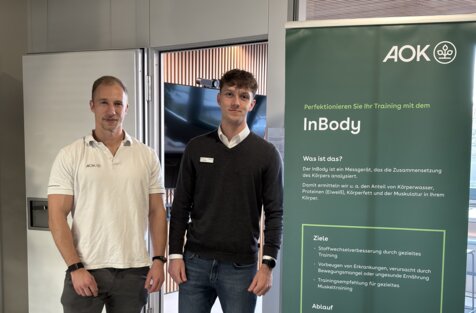
Strengthen health in the workplace!
Our health officer Evi Wittmann has organized a professional bioimpedance analysis for our employees - a valuable service to help them better understand their own body composition.
The energy transition is a global challenge that requires highly industrialized countries as drivers and references. Over the past 10 years, Germany has taken on a pioneering role, laying the foundations for a global movement towards a sustainable energy supply. This is associated with a significant reduction in the burden on our environment by reducing greenhouse gas emissions. Our country enjoys the greatest international recognition for its successes on the path to a new energy era.
The energy transition is a complex large-scale project that, like any other, requires a structure and professional management to consistently track quality, costs and deadlines. Jeremy Rifkin, futurologist, visionary and professor at the Wharton School of the University of Pennsylvania, has developed and published a viable model for the future of energy. In my view, the project stages described in his work "The Third Industrial Revolution" are realistic and comprehensible:In the coming weeks, I would like to analyze these project goals of the "Energy Future Roadmap" and compare them with the current project status from the perspective of the implementer. Our team has been working on the engineering implementation for many years, taking responsibility for the decentralization of the energy landscape in line with the original energy transition. In doing so, we operate within the political framework of energy and environmental laws and regulations. Market incentive programs stimulate developments or steer them in certain directions. The Renewable Energy Sources Act (EEG) and the Combined Heat and Power Act (KWKG) have created the basis for investments in sustainability. With last year's amendment to the EEG and the current draft of the KWKG, the basis for the energy transition in Germany is being removed by politicians; we are experiencing a 180° turnaround, a massive departure from the originally defined goals. Instead of decentralizing energy, the old monopoly structures are being revived and technologies without a future (lignite-fired power plants) are being subsidized and artificially kept alive.
Who pays the bill? We consumers!(Author: Michael Gammel)

Our health officer Evi Wittmann has organized a professional bioimpedance analysis for our employees - a valuable service to help them better understand their own body composition.

As in previous years, we will of course not miss out on the popular Lions doughnut feast on 11.11 this year.

Yoga has been an integral part of our company routine for exactly one year now! Every Tuesday after work, around 8 to 12 employees meet for a yoga session with Susanne Ohneis. What originally began as a test phase has now become a fixed part of our health program - and many colleagues can no longer imagine their weekly schedule without it.